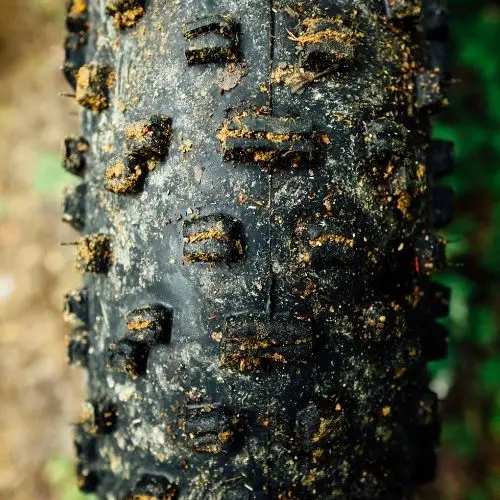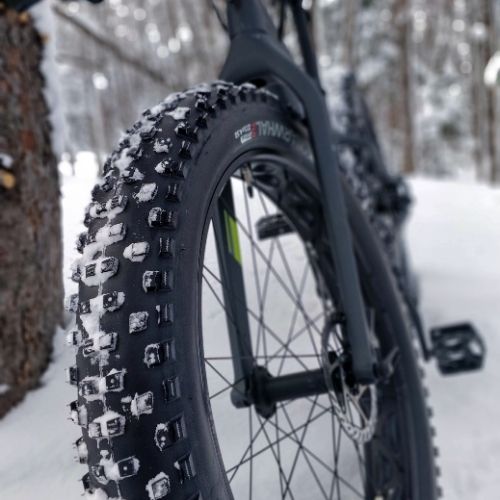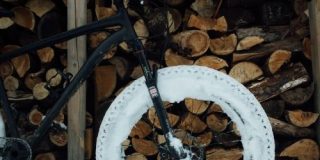If you are buying or have a new bike, you have probably noticed the hair-like structure made of rubber on top of its tires.
So what are these little hairs calls? Those hairs are called vent spews or spew holes, and they are a by-product of an offshoot of tire manufacturing.
Riders have divided opinions on their importance. Some say that you must take them off; others think that your tire will be deficient if you do, so what purpose do they serve exactly?
How are bike tires manufactured with those hairs?
Before knowing precisely what vent spews are, you must be familiar with tire manufacturing first and how the process of making a tire will result in rubber hairs.

Step 1:
After getting the correct mixture of nylon, rubber, and plastic is blended with computerized techniques, the rubber blend is shaped into the raw form of a tire, which is called “a green tire”.
You can visualize a green tire as a smooth tire. It has no nooks and crannies nor flange (flared edges) yet.
Step 2:
It is then transferred into a mold, built like a clamshell from the inside but with the tire pattern designed by the manufacturer. This process is called curing or vulcanization.
This process allows the green tire to be molded into the regular shape you see in the market by injecting hot liquid rubber inside the tire, and hot air pressure is applied with 280 heat to soften the rubber.
This assures that the rubber expands all over the container’s insides and obtains the form of beads, threads, blocks, dimples, and ribs a commercialized tire has.
Step 3:
The air pressure applied causes air bubbles to form. This is why during the molding process, the tire-making machine makes sure the air trapped escapes through vents, the rubber takes the vent shape as well, and voila! There are our vent spews or tiny hairs on fresh tires after they are cooled down and solidified.
If you still haven’t imagined the process, think of it as a baking process.
You first need a cake mix that will make a cake mold’s shape. While cooking, the heat and other substances will cause the baking powder to produce tiny bubbles in your baked good. To release the air, you will need to poke it with a fork; in consequence, the raw dough takes the fork’s shape slightly, and that’s precisely what vent spews are in the tire manufacturing process.
Are the hairs on the bike tires useful?
Many riders think that sprues (vent spews) are a reference to check the “newness” of the tires or their age. This isn’t entirely wrong, nor right.
Even though rubber hairs are proof that the tires are still new or fresh out of the factory, there can be a small probability of a defective product. They may lack air pressure, missing a block or a tread, for example, and with the sprues still, there, it doesn’t mean the tires are good.
Furthermore, checking the tire’s condition shouldn’t rely on vent spews. You can have them on your tires and still hit a curb without your tire resisting the shock because of all the reasons above. The safety check should be professional or at least done with tools such as the tread wear indicator check and tire pressure calculators.
- What Are Studded Snow Tires on Bikes?
- Are there Bikes without Gears? What are Single Speeds and Fixed Gears?
- Will a bicycle fit in my car? They can, but there may be better ways
Should you cut the hairs on the bike tires off?

If you want to leave them or cut them, it is entirely up to you. If you decide to leave them on, they will eventually wear off due to environmental effects or after being used a couple of times.
Although, if your tires have rubber hairs on still, you will have a better chance to sell your bike if you have the intention to, as many riders will refer to that while buying a bike.
On the other hand, if you choose to cut them off, be careful not to damage your tire.
You should avoid using sharp blades, knives, or scissors and go for nail clippers or remove them one by one by hand instead. Word of caution, though, does this only on the surface of the treads. It is recommended to leave them on the shoulder and sidewall of the tire as they are the most fragile parts of it.
As Steve Burke, technical manager of a tire and rubber fabrication company, said, “It doesn’t matter. Vent spews have no functional purpose post-manufacturing. Many show car owners take great pride in shaving or clipping the nibs down”.
Conclusion
To sum it up, vent spews will tell you if the tires are fresh, but not if they’re in good condition or not. Now you know that those “hairs” made of rubber on your tires are just a by-product of manufacturing due to air pressure escaping.














